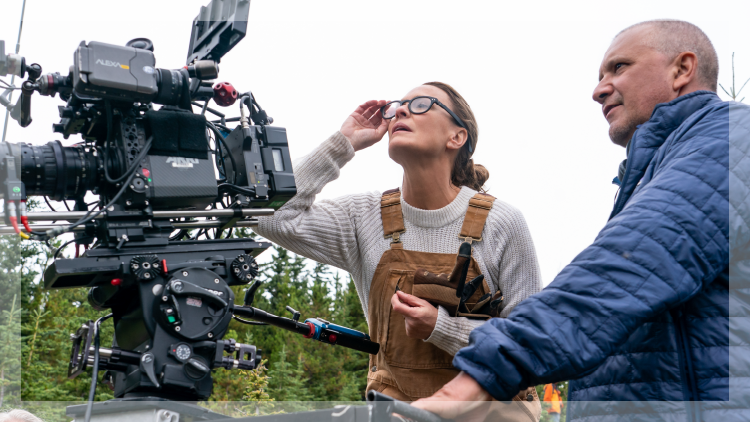Overview
The business of telling stories on screen is a beautiful, fun, inspiring and rewarding way to earn a paycheque. The world has never been more hungry for screen-based content and Alberta is quickly becoming a hotspot for production and the place to be if you want to work in the industry.
There are a number of ways you can start your career.

Make a film
There are a number of unions and private organizations that offer training, workshops and mentorship opportunities that can get you started in the business.
Attend an event
Film festivals, conferences and events offer a chance to learn from filmmakers, rub elbows with the industry and make connections.
I love Alberta… [We] went on hikes and dove in lakes and took in the natural wonders of Alberta and Canada. The challenge was to make sure that we could show up every day and give ourselves fully.
Get an education
Alberta is filled with post-secondary schools offering an education in everything from acting, screenwriting and directing to lighting, make up artistry, special effects and video game design.
| Institution | Program | Focus of study |
|---|---|---|
| Alberta University of the Arts | Media Arts | Video, film, sound, multimedia, digital technologies, photography |
| Ambrose University | Fine Arts Program | Acting, directing, playwriting |
| Bow Valley College | Centre for Entertainment Arts (CEA) | Visual FX (Virtual Production), 3D animation and modelling, game development, entertainment arts |
| MacEwan University | Bachelor of Fine Arts | Music, studio arts, theatre production |
| Mount Royal University | Broadcast and Media Studies | |
| NAIT School of Applied Sciences and Technology | Media, Creative and Communications | Animation, digital cinema, game design, radio and television |
| Pixel Blue College | 3D animation and VFX, 2D animation and illustration, digital audio engineering and production | |
| Red Deer Polytechnic | Creative Arts | Animation and VFX, film, theatre and live entertainment |
| SAIT | Film and Video Production | Film and video production, new media production and design, radio, television, broadcast news |
| University of Alberta | Drama | Acting, design, stage management, technical production |
| University of Calgary | Bachelor of Communication and Media Studies | |
| University of Lethbridge | New Media | Artistic directing, lighting design, set design, costume design, playwright, makeup artistry, scriptwriting, technical directing, stage directing, casting |
| Visual College of Art and Design | 3D Modeling, Animation |
Job positions in film and television
If you have ever sat through the credits of a movie, you can see just how many people it takes to make a production happen. Here are just a few of the jobs you can get in film and television.
Get in touch
If you are wondering if Alberta is right for your next project, give us a call or send us a message.
